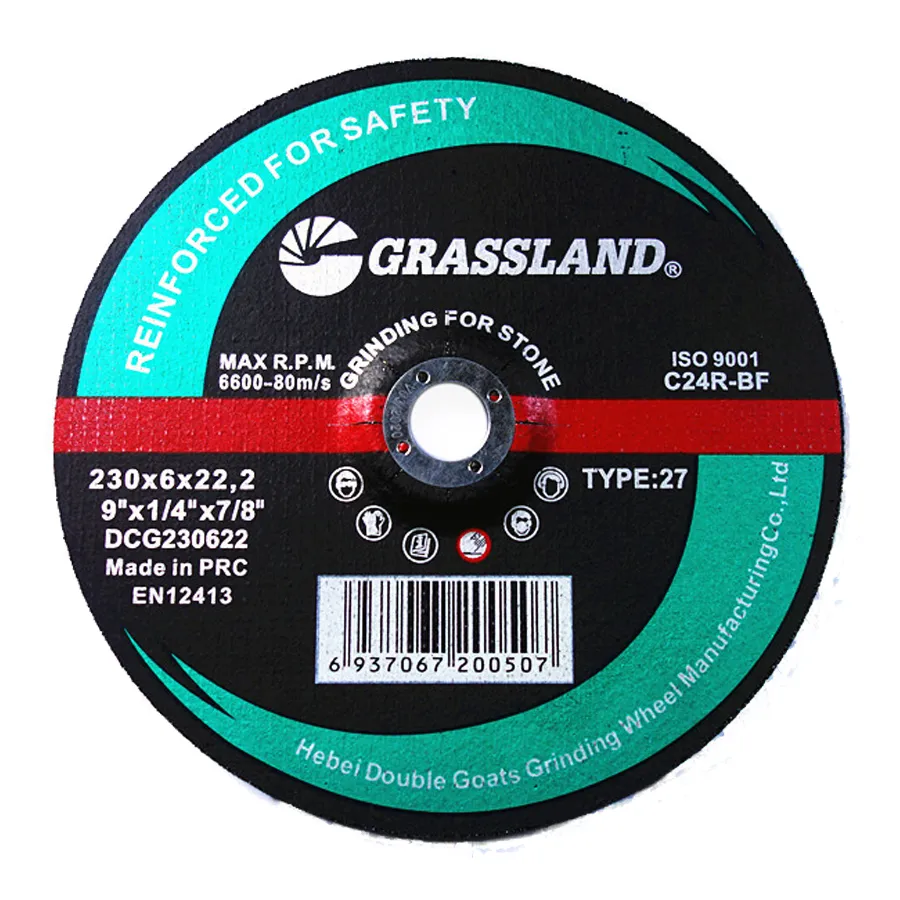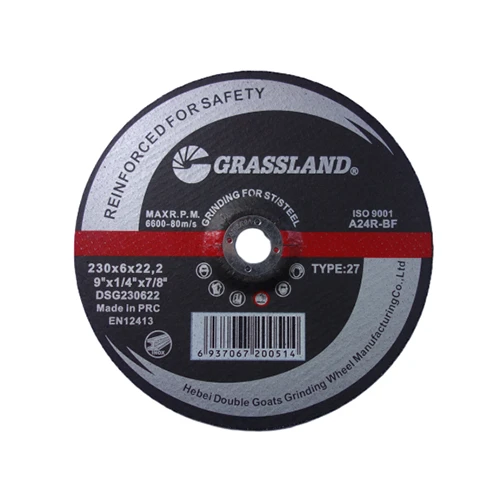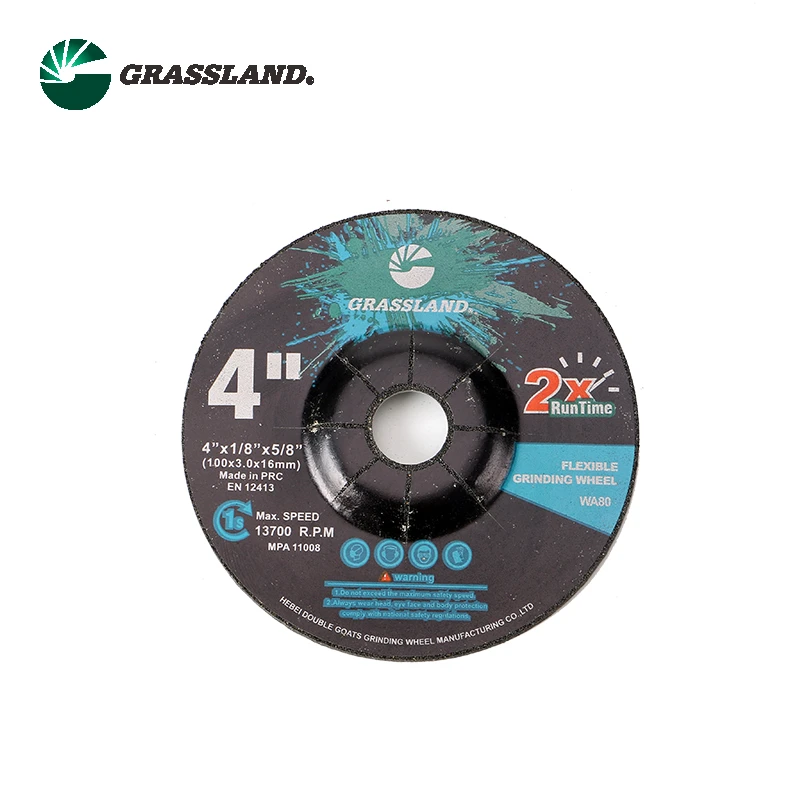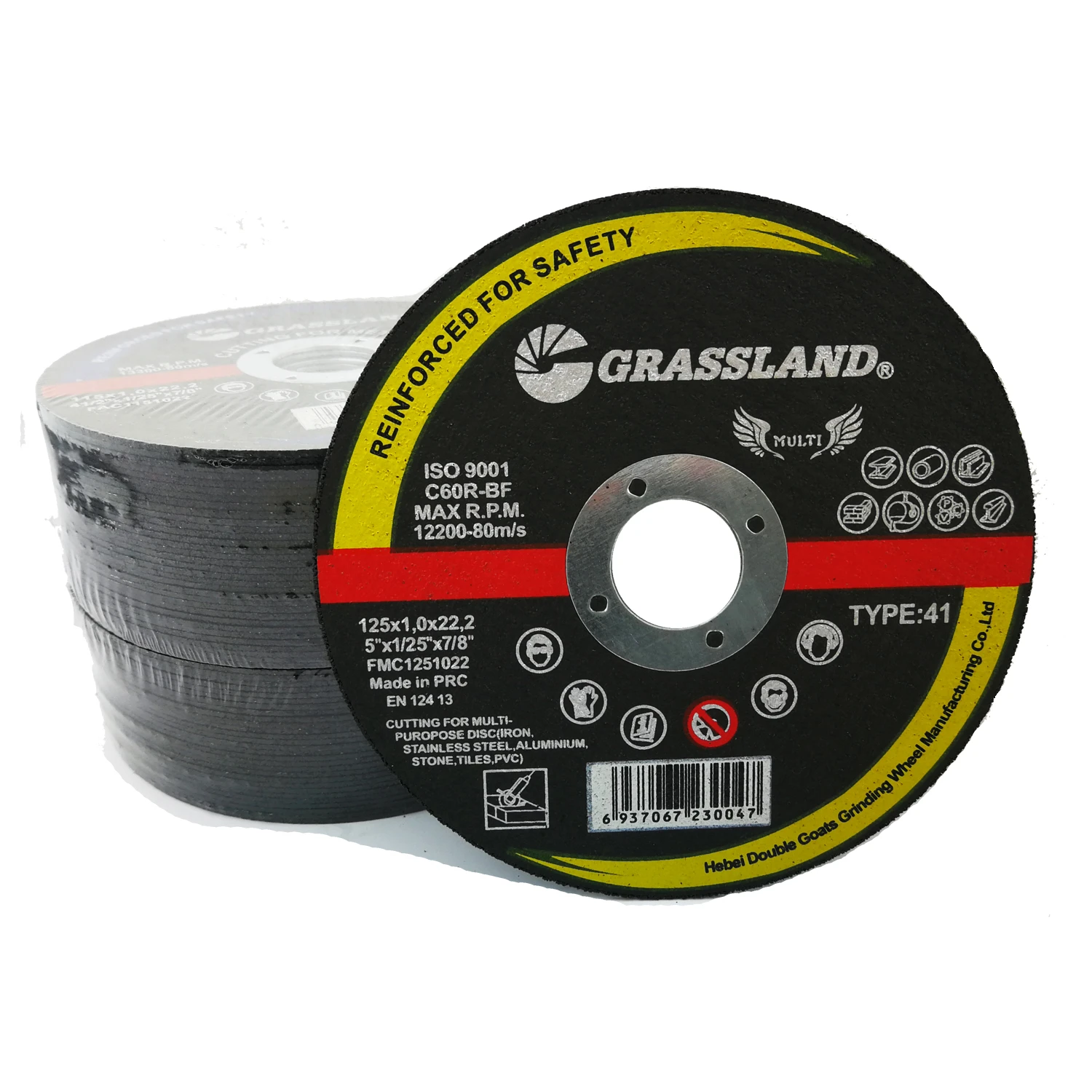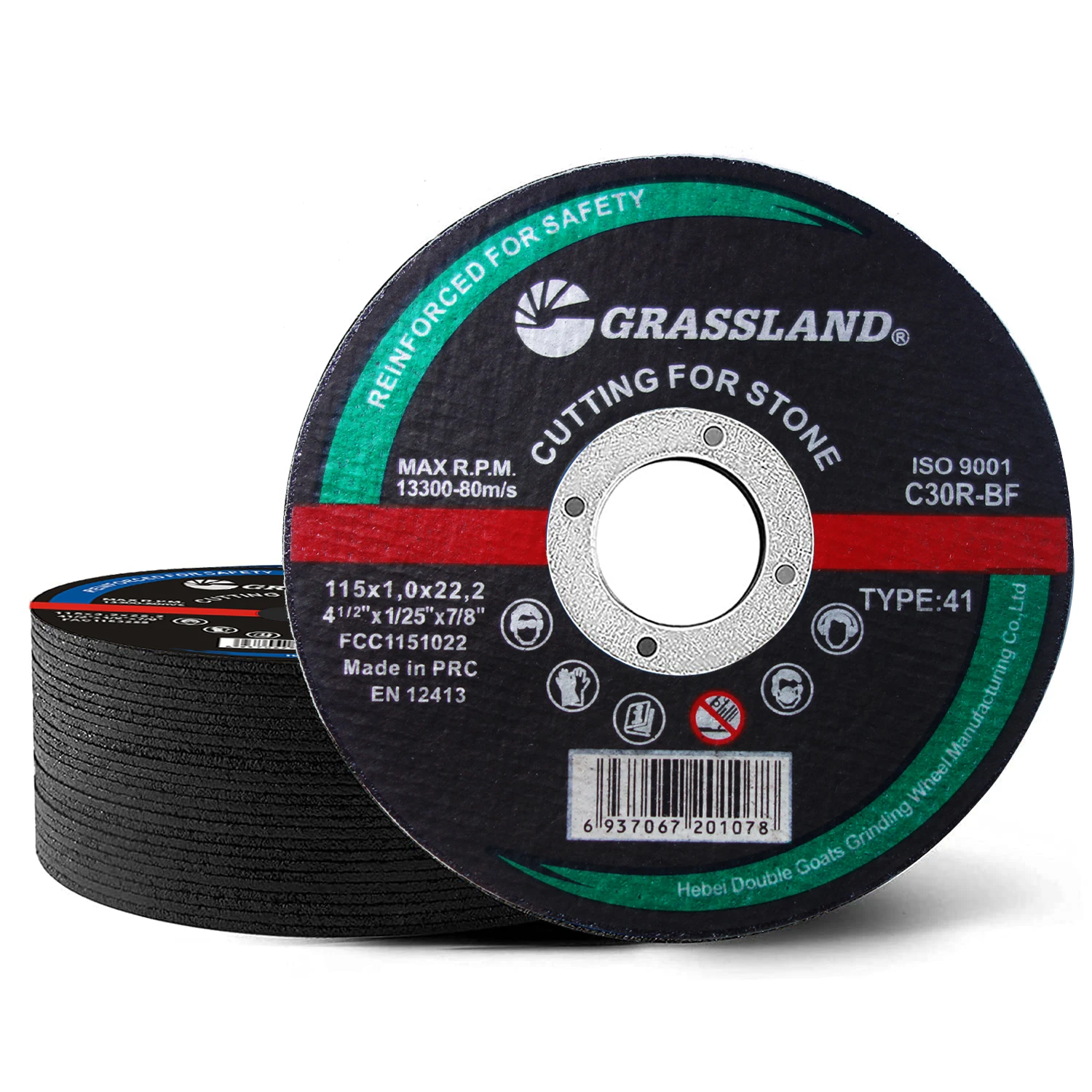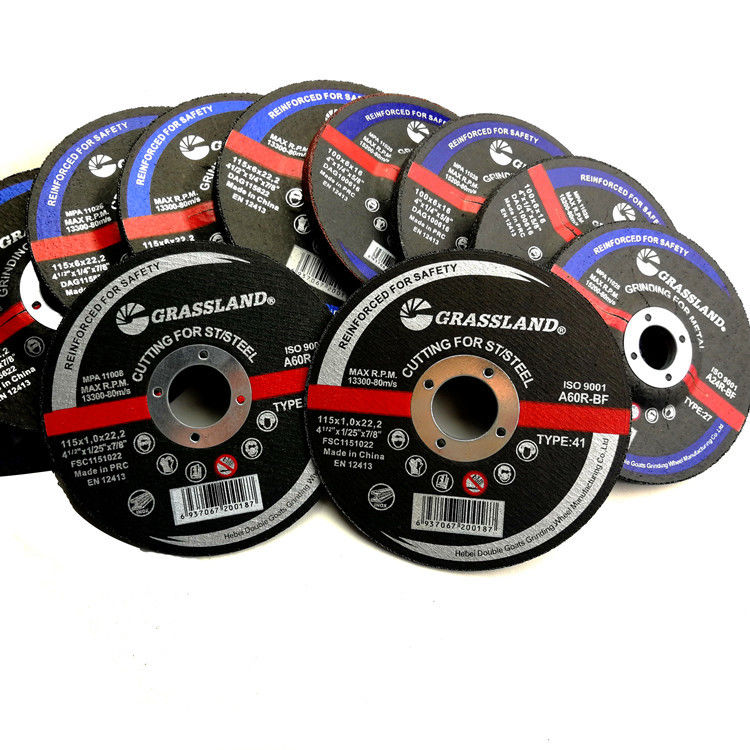- Market impact statistics: Analyzing global demand across industries
- Technical innovations in grinding wheel composition
- Major manufacturer capabilities and specialties compared
- Material-specific customization solutions
- Advanced bond systems for performance optimization
- Industry-specific application case studies
- Critical selection guidelines for optimal outcomes
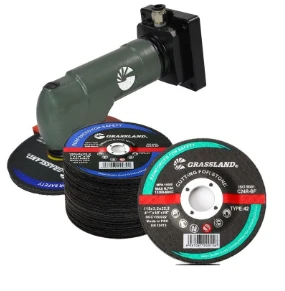
(what are the different types of grinding wheels)
What Are the Different Types of Grinding Wheels and Industrial Impact?
The global market for abrasives, including grinding wheels, reached $51.2 billion in 2023 and projects 4.8% CAGR through 2028 (GIA). This growth correlates directly with understanding different grinding wheel compositions like aluminum oxide, silicon carbide, diamond, and CBN abrasives. Automotive manufacturing consumes 34% of industrial abrasives, while aerospace applications show strongest growth at 7.2% annually, driven by titanium component production requiring specialized diamond/cubic boron nitride wheels. Material removal rates vary dramatically: vitrified bonds enable 15% faster stock removal than resin bonds, while ceramic-aluminum-oxide blends extend wheel lifespan by 30-40% compared to conventional grains.
Material Composition and Performance Metrics
Grinding wheel classification primarily depends on abrasive type and bonding materials:
1. Conventional abrasives: Aluminum oxide handles steels (60% market share), while silicon carbide excels on non-ferrous metals and carbide tooling
2. Superabrasives: Diamond wheels dominate grinding carbide, ceramics, and glass (15μm precision). CBN outperforms in hardened steels above 50HRC
3. Hybrid solutions: Norton's Altos ceramic-aluminum blend increases removal rates by 27% while reducing thermal damage
Data shows resin bonds maintain 42% market preference for impact resistance, whereas vitrified bonds capture 38% for precision tolerances. Metal bonds hold just 8% share but achieve exceptional dimensional stability in CNC applications. Recent innovations include porous vitrified structures that reduce grinding temperatures by 200°F during high-speed operations.
Manufacturer Capability Analysis
| Manufacturer | Core Technology | Specialization | Max Speed (m/s) | Tolerance (μm) |
|---|---|---|---|---|
| Norton Abrasives (Saint-Gobain) | ALTOS ceramic grains | High-precision aerospace | 140 | ±2 |
| 3M Cubitron | Precision-shaped ceramic | High-pressure grinding | 160 | ±5 |
| Tyrolit | Diamond/CBN technology | Automotive toolroom | 125 | ±10 |
| Radiac Abrasives | Hybrid bonding systems | Medical implant manufacturing | 110 | ±1.5 |
Material-Specific Customization Solutions
Optimized wheel composition varies drastically by workpiece material:
- Aerospace titanium: Electroplated CBN wheels with open structure pattern reduce work rehardening (20% surface integrity improvement)
- Tool steels (D2/M2): Vitrified alumina-zirconia blends prevent edge chipping at 58-62 HRC hardness
- Ceramics: Resinoid-bond diamond wheels (D126 μm grit size) maintain ±0.0005" tolerance in CNC machining
- Composites: Silicon carbide wheels with reinforced backing plates minimize delamination
Precision grinding specialists like Kuretake offer pore-gradient wheels for mold-making applications where wheel configuration must counteract tool deflection. Thermal-sensitive materials benefit from water-based coolants reducing cutting zone temperatures below critical phase-change thresholds.
Bonding System Innovations
Bonding materials determine critical wheel characteristics:
- Vitrified bonds (glass-based): 70-75% industry usage for precision grinding. Allow speed up to 140m/s with ceramic abrasives
- Resin bonds: Impact resistance for cutoff wheels. New phenolic nano-composites increase bond strength by 40%
- Hybrid bonds: Metal-resin combinations maintain G-ratio above 100 during carbide insert production
- Electroplated bonds: Essential for CBN superabrasives in creep-feed grinding applications
Recent breakthroughs include vitrified bonds with micro-crystalline structures enabling self-sharpening characteristics that reduce dressing frequency by 35% in production environments. For CNC grinding, adaptive bonds automatically adjust wear resistance based on temperature fluctuations detected through integrated sensors.
Industrial Application Case Studies
- Automotive: Toyota transitioned to Norton Quantum ceramic wheels - 23% cycle time reduction on crankshaft journals
- Aerospace: Precision CBN wheels achieve 0.8μm Ra finish on turbine blades versus 1.2μm with conventional abrasives
- Medical: Radiac's zirconia-alumina wheels grind surgical implants at 14% lower force, eliminating micro-cracks
- Energy: Diamond cup wheels maintain 0.025" profile tolerance through 3,500 wind turbine gear refurbishments
Data from machining centers shows wheel selection influences productivity more significantly than machine parameters - optimized wheels increase MRR (Material Removal Rate) by 19-28% while reducing scrap rates from thermal damage by 60% in bearing manufacturing.
Key Considerations When Choosing Different Types of Grinding Wheels
Selecting appropriate grinding wheels requires analyzing operational parameters:
- Workpiece compatibility: Match abrasive hardness to material - aluminum oxide for steels, silicon carbide for aluminum/brass
- Stock removal needs: Coarse grits (24-46) for rapid material removal; fine grits (150+) for finishing
- Coolant availability: Resin bonds deteriorate with water-based coolants requiring specialized formulations
- Machine specifications: Verify max wheel speed (SFPM) rating against machine capabilities
- Cost-per-part analysis: Superabrasive wheels cost 10× more but last 200× longer in carbide grinding applications
For critical applications like thread grinding aerospace components, conduct trial runs measuring surface roughness (Ra), wheel wear rate (G-ratio), and thermal damage. Premium solutions incorporating different types of abrasives used in grinding wheels consistently deliver ROI within 90 days despite higher initial costs.
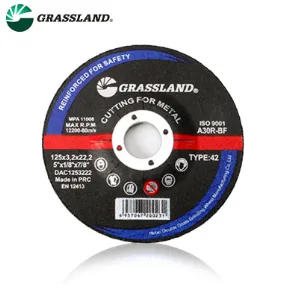
(what are the different types of grinding wheels)
FAQS on what are the different types of grinding wheels
Q: What are the different types of grinding wheels?
A: Common types include straight wheels, cylinder wheels, tapered wheels, cup wheels, and dish wheels. Each type is designed for specific applications like surface grinding, cutting, or tool sharpening. Material and shape determine their functionality.
Q: What different types of abrasives are used in grinding wheels?
A: Key abrasives include aluminum oxide, silicon carbide, ceramic aluminum oxide, and diamond/cubic boron nitride (CBN). Aluminum oxide suits ferrous metals, while silicon carbide works for non-ferrous materials. Diamond and CBN are used for ultra-hard surfaces.
Q: How do different types of grinding wheels vary by application?
A: Straight wheels are for flat surfaces, cup wheels for tool grinding, and dish wheels for carbide cutting. Segmented wheels handle concrete, while diamond wheels grind glass or ceramics. Application dictates wheel composition and structure.
Q: What are the main categories of grinding wheels based on bonding agents?
A: Bond types include vitrified (ceramic), resin, rubber, and metal bonds. Vitrified bonds are heat-resistant, resin suits high-speed cutting, metal bonds are for diamond/CBN wheels, and rubber is for flexible finishes.
Q: Which grinding wheel types are best for precision tasks?
A: Diamond and CBN wheels excel in precision grinding for hard materials like carbide or hardened steel. Fine-grit ceramic aluminum oxide wheels also provide high accuracy. Selection depends on material hardness and finish requirements.
Post time:Jun - 02 - 2025







